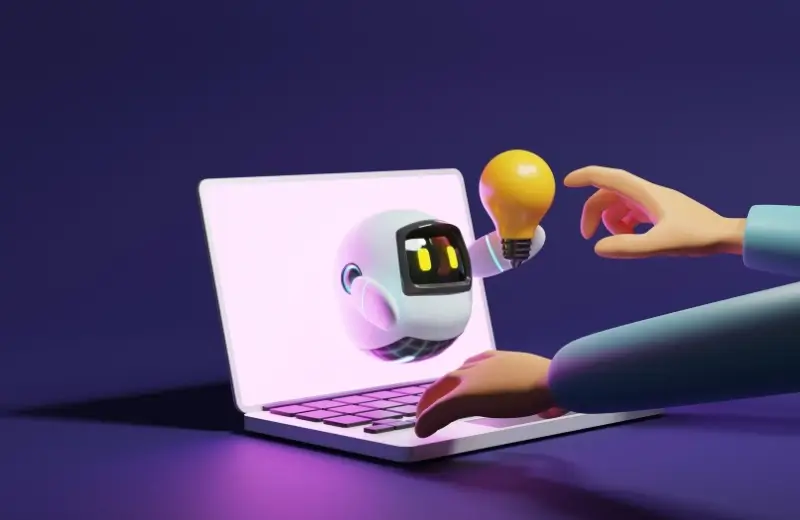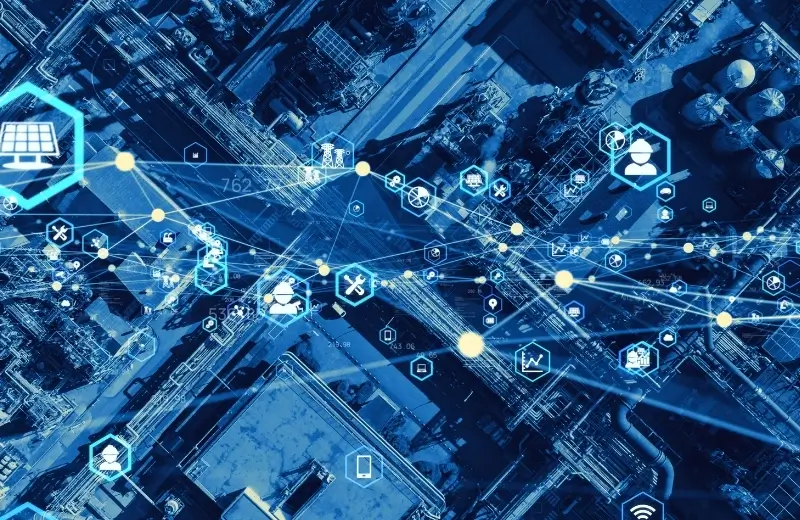In the fast-evolving field of biotechnology, Computer Vision is emerging as a transformative force. This cutting-edge technology is redefining how processes, diagnostics, and research are conducted, leading to groundbreaking advancements that were previously unimaginable. Here’s a look at how Computer Vision is revolutionizing the biotech industry in ways that are both impactful and promising.
1. Enhanced Diagnostics and Imaging
Medical diagnostics is undergoing a revolution thanks to Computer Vision, which uses AI-driven algorithms to analyze complex medical images with incredible precision.
Here’s a closer look:
- X-ray and MRI Analysis:
Traditional diagnostics rely heavily on the expertise of radiologists, but even experts can occasionally miss subtle abnormalities. Automated systems powered by Computer Vision can process X-rays, MRIs, and CT scans at lightning speed. These systems detect anomalies like fractures, tumors, or infections with high accuracy, even in their earliest stages. For example, AI algorithms can highlight microcalcifications in mammograms or detect tiny lung nodules that might signal early cancer. - Cellular Imaging:
At the microscopic level, diseases often manifest as changes in cellular structures. Using Computer Vision, researchers can identify these changes more effectively.
For instance:
- Tracking how cells respond to treatment over time.
- Detecting irregularities in cell morphology associated with diseases like cancer.
Such detailed analysis enhances the understanding of disease progression, aiding in both diagnosis and research.
This level of accuracy helps in early detection, improving treatment outcomes, and saving countless lives by intervening before diseases progress.
2. Accelerated Drug Discovery
The journey of developing a new drug typically spans years, with significant costs attached. Computer Vision dramatically streamlines this process through innovative techniques:
- Analyzing Vast Datasets:
Drug discovery involves examining millions of compounds to identify those with potential therapeutic effects. Computer Vision can analyze massive datasets, such as molecular structures, faster and more efficiently than traditional methods. By recognizing patterns, it identifies the most promising candidates in record time. - Predicting Efficacy:
Beyond identification, Computer Vision predicts how well these compounds might work in specific conditions.
For example:
- Simulating drug interactions with target proteins.
- Evaluating molecular stability and effectiveness in real-world scenarios.
These capabilities significantly reduce the time and costs associated with clinical trials, ensuring that patients receive innovative treatments faster and with fewer side effects.
3. Streamlined Laboratory Processes
Biotech laboratories are hubs of data and experimentation. The sheer volume of work makes errors and inefficiencies a challenge. Computer Vision introduces automation and precision to laboratory workflows:
- Sample Identification and Sorting:
In labs, sorting and cataloging samples—whether blood vials, tissue specimens, or chemical compounds—is labor-intensive. Computer Vision automates these tasks, scanning and categorizing samples based on barcodes, labels, or even physical characteristics, minimizing human error. - Data Analysis:
Biotech research generates vast quantities of data, especially during experiments. Computer Vision helps analyze trends, correlations, and patterns from the data quickly.
For example:
- Studying cell behaviors in response to various stimuli.
- Analyzing lab-generated images to identify anomalies or trends.
This automation allows researchers to focus on strategic problem-solving rather than repetitive manual tasks, accelerating breakthroughs.
4. Revolutionizing Agriculture and Genetic Engineering
Computer Vision is not confined to medical and lab settings; its potential extends into agriculture and genetic modification:
- Precision Farming:
Computer Vision enhances farming practices by monitoring every aspect of crop health.
For example:
-
- Using drones equipped with cameras and AI algorithms to assess plant health and detect issues like pests or diseases early.
- Estimating yields based on visual analysis of crop growth stages, enabling better resource planning.
- Genetic Engineering:
In genetic research, scientists often manipulate genes to produce desirable traits in organisms.
Computer Vision helps:
- Identify specific genes in complex datasets.
- Ensure precision during gene-editing processes, reducing errors and improving outcomes.
These applications improve sustainability and efficiency in food production while enabling breakthroughs in genetic engineering.
5. Challenges and Ethical Considerations
While the benefits of Computer Vision are immense, its integration into biotechnology must be carefully managed to address several critical concerns:
- Data Privacy:
Medical and genetic data are sensitive. Ensuring this data is securely stored and processed without unauthorized access is vital. - Ethical Concerns:
The use of AI in decision-making raises ethical questions, such as:
-
- Should AI systems be allowed to make critical medical decisions without human oversight?
- What happens if algorithms unintentionally reinforce biases?
- Bias in Algorithms:
AI systems are only as good as the data they are trained on. If the training data is incomplete or biased, the results can be inaccurate, leading to potential harm.
Addressing these challenges involves creating robust policies and frameworks for the ethical and secure use of AI in biotech.
6. The Future of Biotech with Computer Vision
The future of biotechnology, driven by Computer Vision, holds incredible promise. Here’s what lies ahead:
- Personalized Medicine:
Treatments tailored to individual genetic profiles could become the norm. For example, Computer Vision could analyze a patient’s genetic and health data to suggest the most effective therapies with minimal side effects. - Advanced Disease Detection:
Combining Computer Vision with other AI technologies could lead to highly sophisticated diagnostic systems capable of detecting rare and complex diseases even before symptoms appear. - Innovative Treatments:
As understanding grows, Computer Vision might help in designing entirely new therapies, such as AI-assisted robotic surgeries or bioengineered organs.
This fusion of Computer Vision and biotech is not just enhancing current practices but paving the way for a future where healthcare and science break new frontiers. The journey ahead is filled with potential to transform how humanity tackles its most pressing medical and scientific challenges.
Conclusion
The convergence of Computer Vision and biotechnology is not just a technological evolution—it’s a revolution. From enhancing diagnostics and accelerating drug discovery to optimizing lab processes and advancing genetic research, the impact is profound. As this powerful alliance continues to evolve, the biotech industry is poised to push the boundaries of what is possible, creating a future where science and technology work hand in hand to solve humanity’s most pressing challenges.



